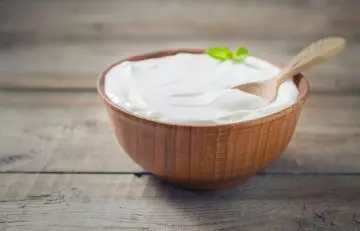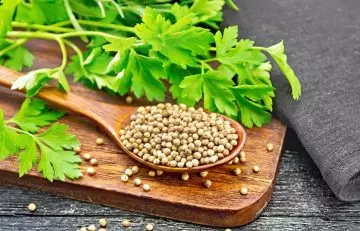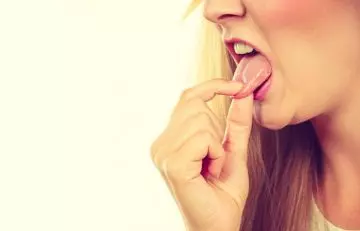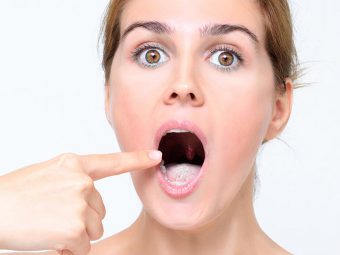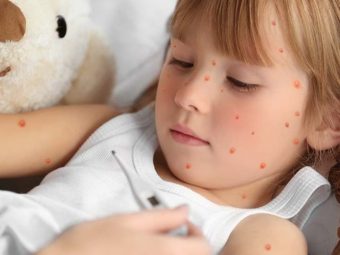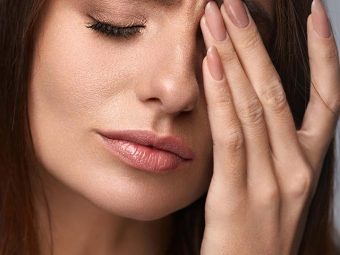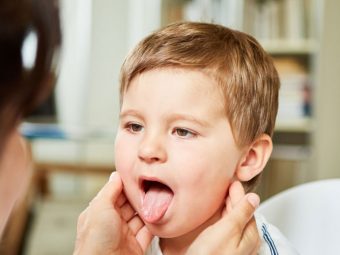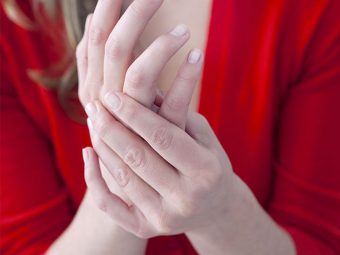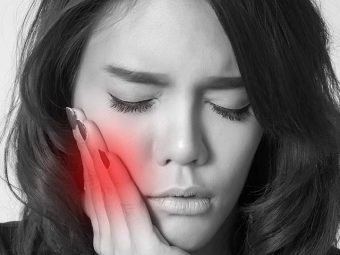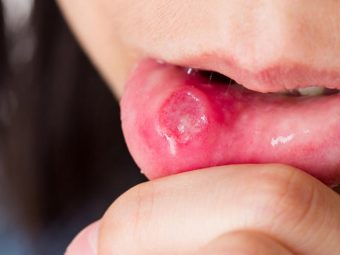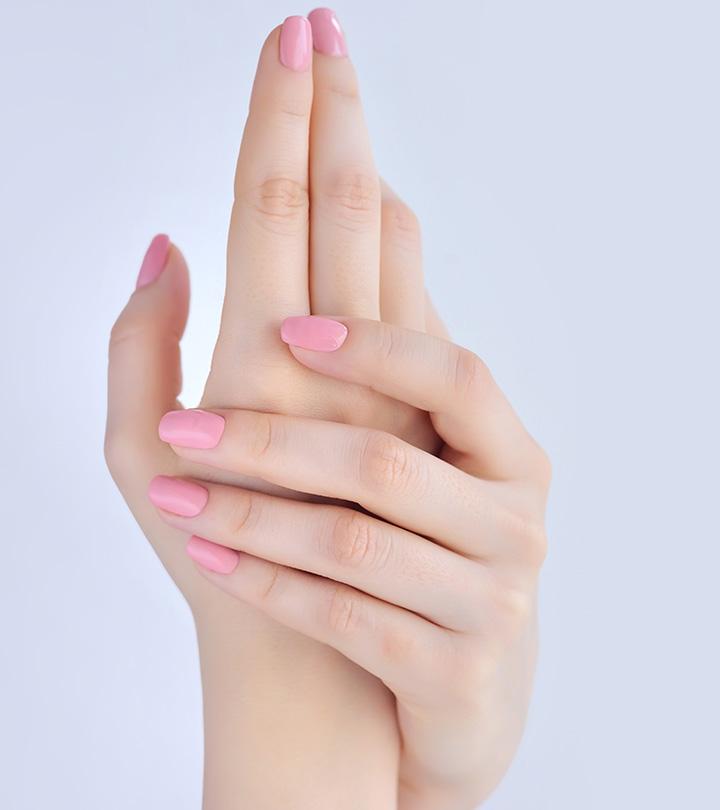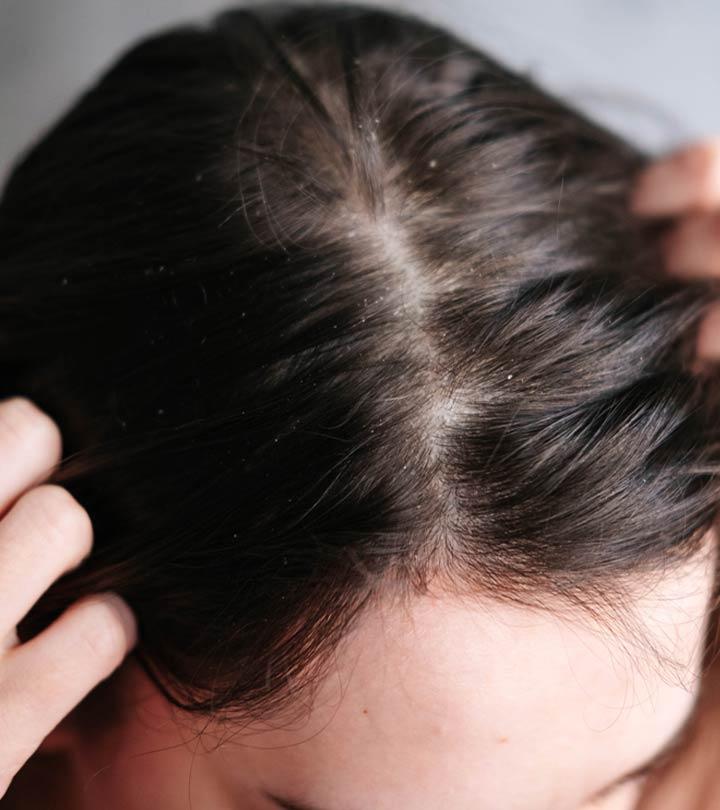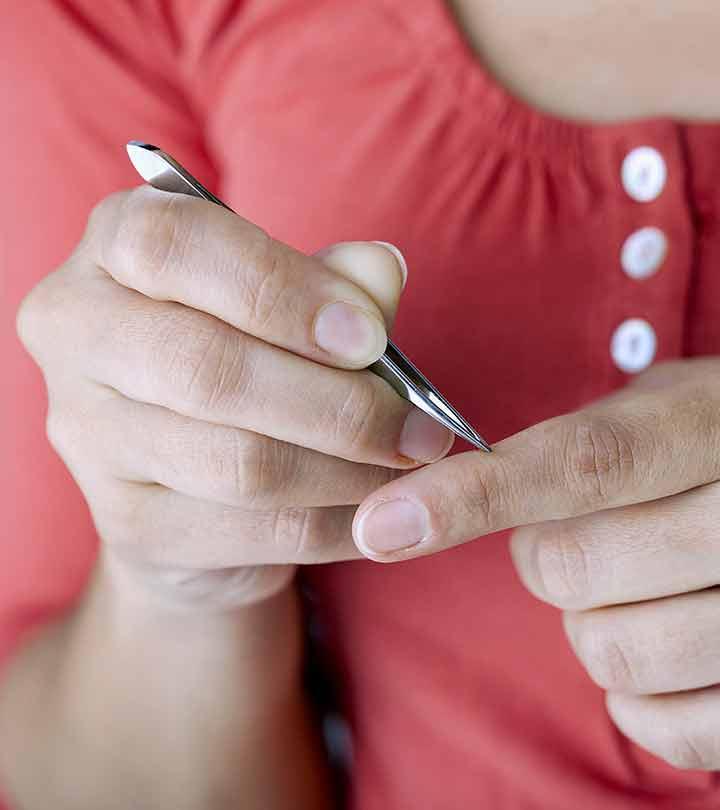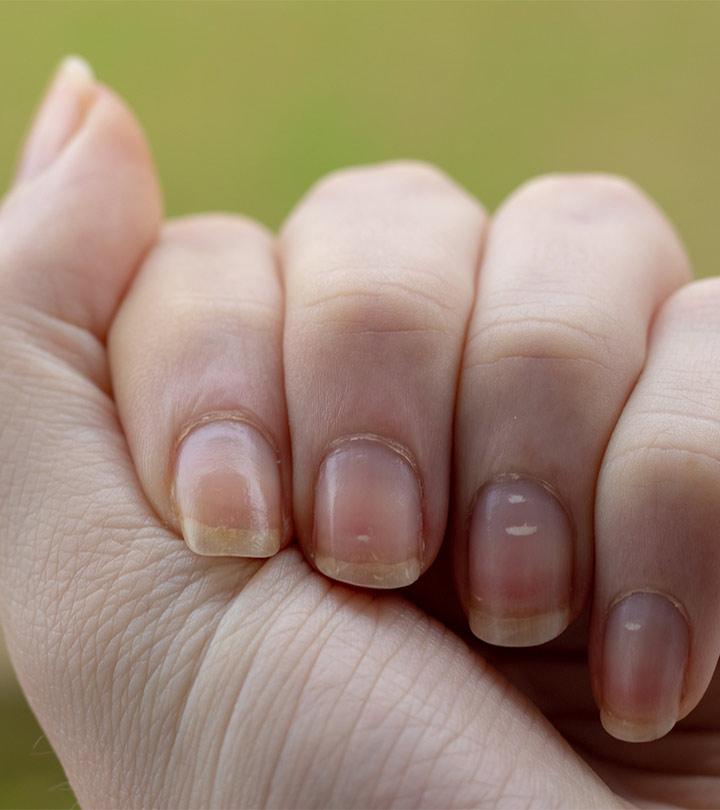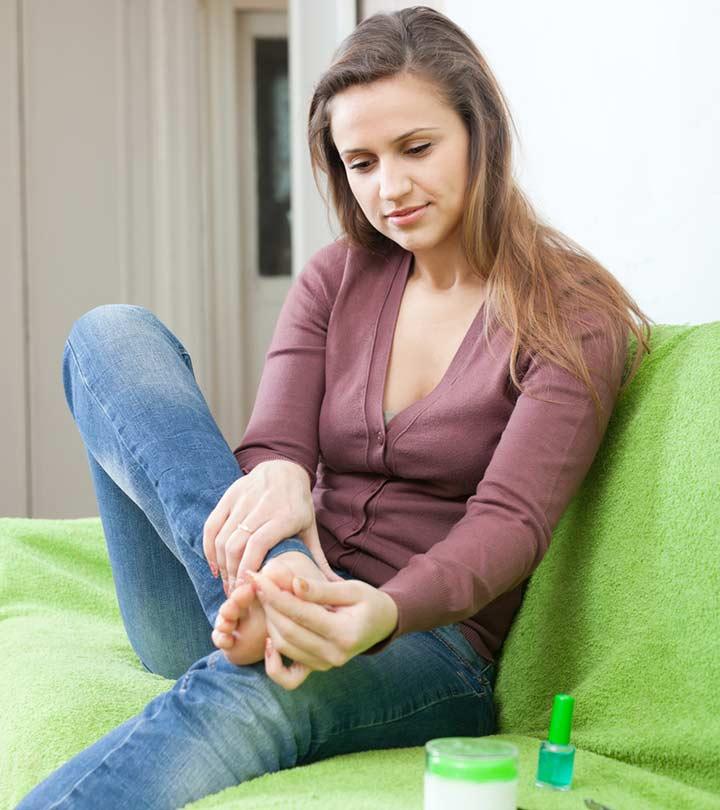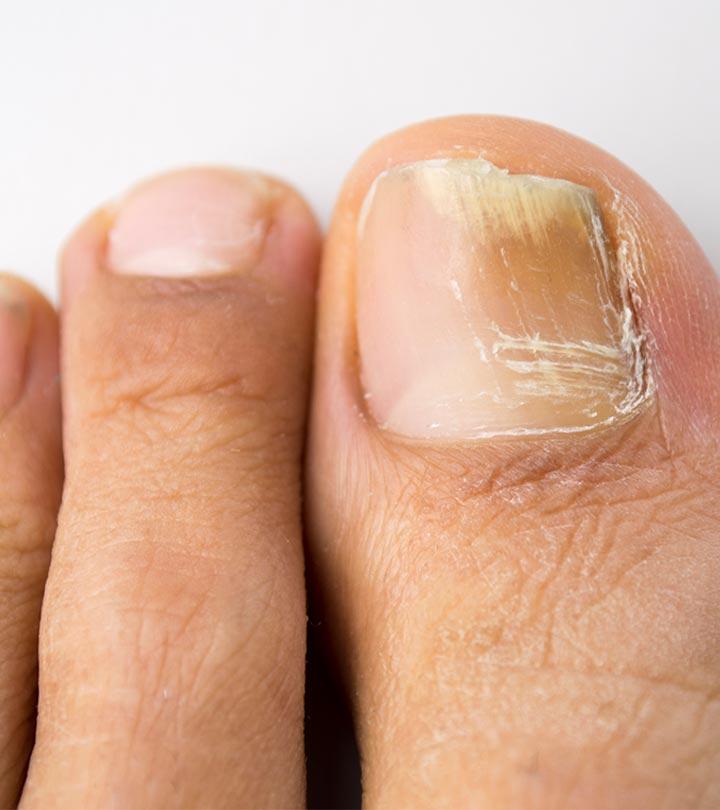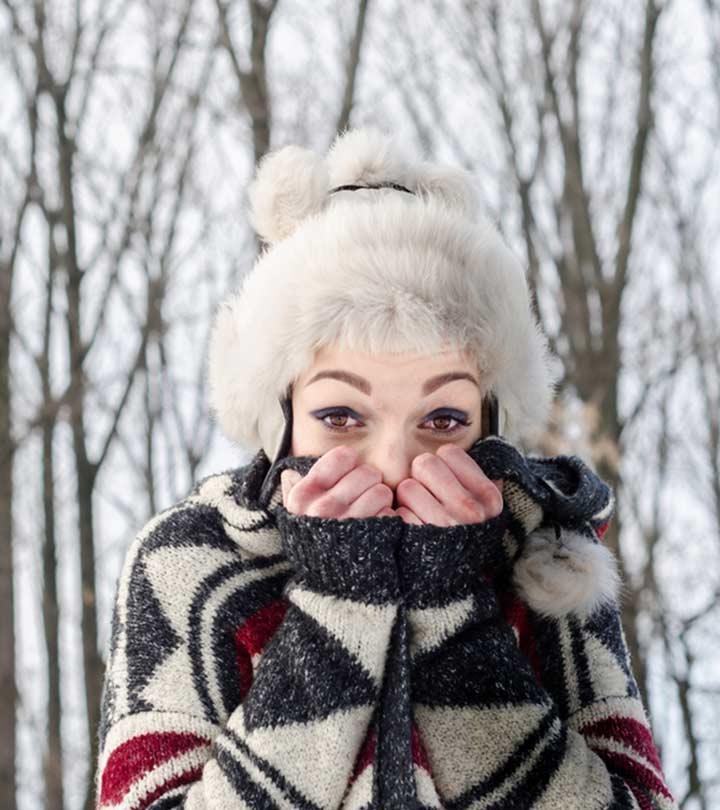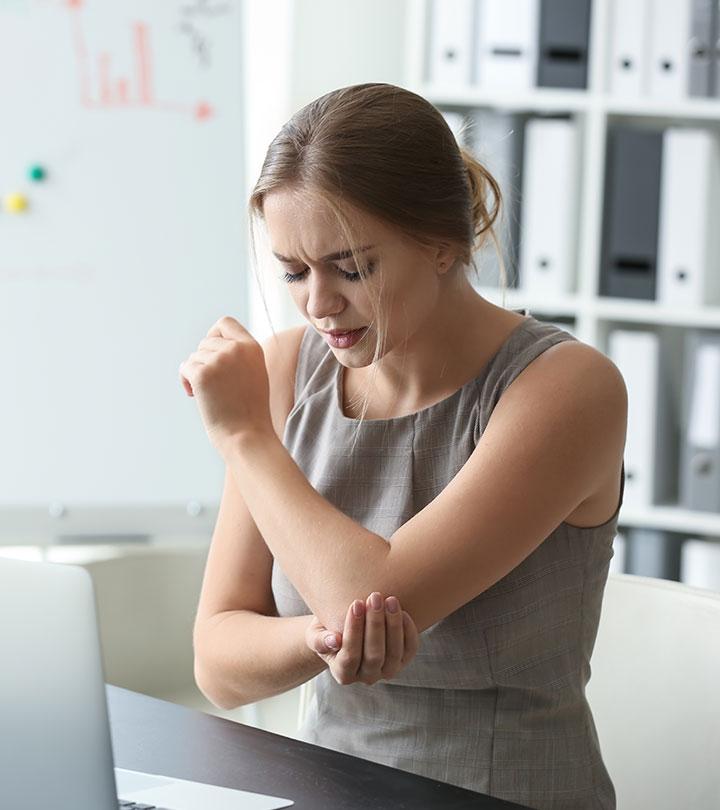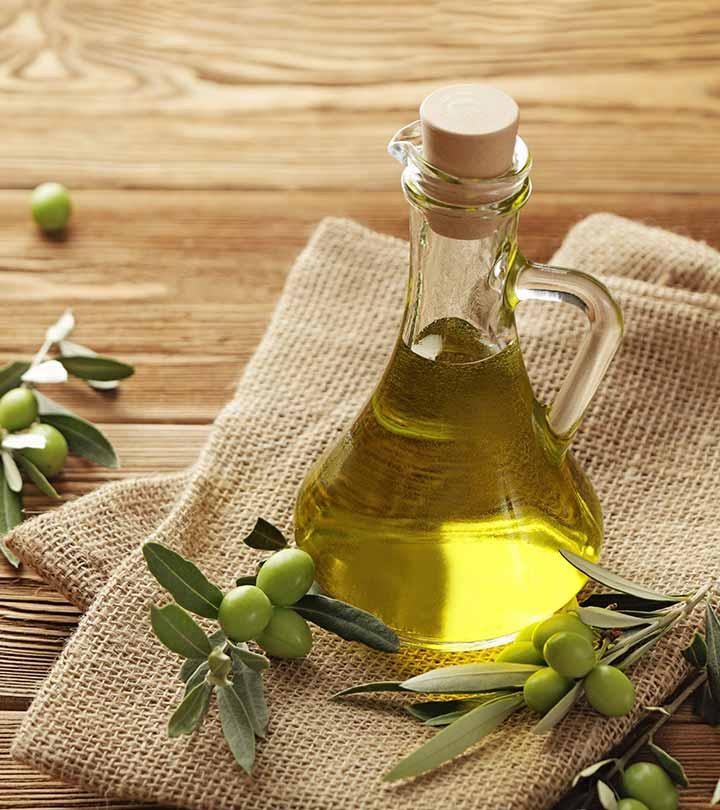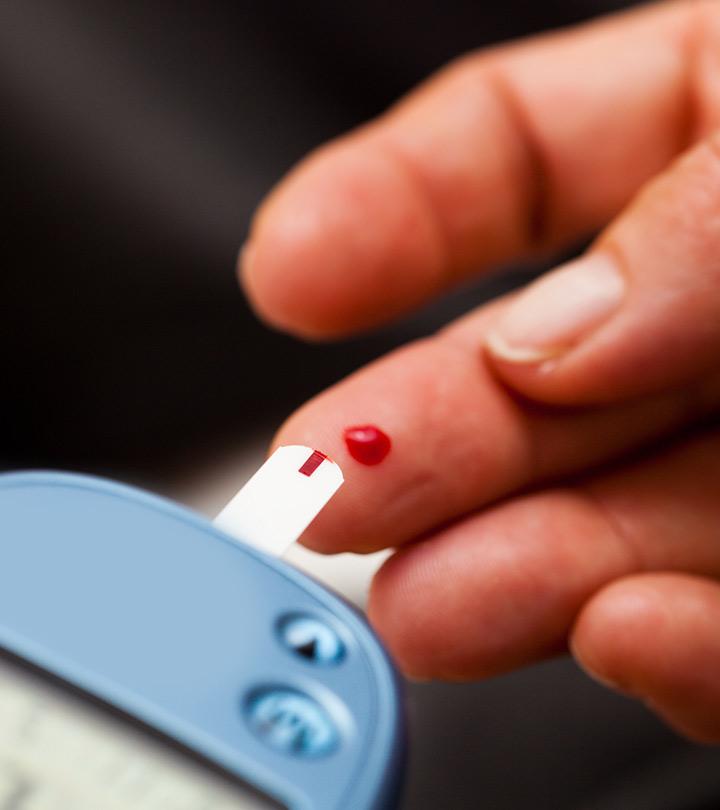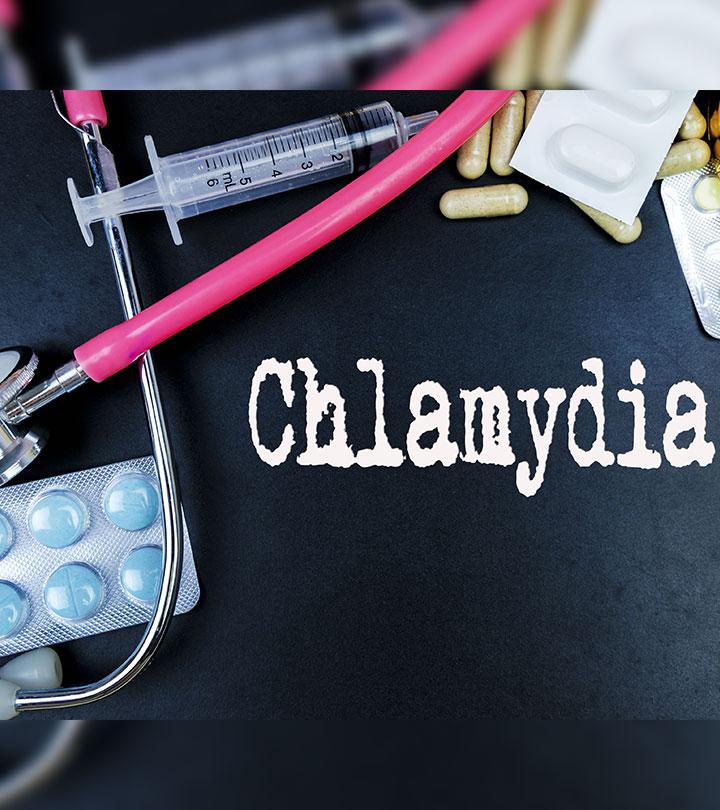16 Home Remedies For Blisters On The Tongue & Prevention Tips
Treat those harmless yet unpleasant blisters with natural and effective cures.
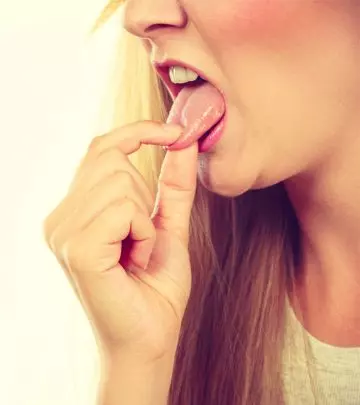
Image: Shutterstock
Blisters on the tongue is one of the most prevalent oral ailments that almost everyone encounters at some point in their lives. Although the pain associated with tongue blisters subsides in 7-10 days, the blisters themselves can be exceedingly unpleasant.
Although harmless, a single blister can affect your perception of taste, besides being unpleasant. They can be in vesicle, abscess, or pustule form. You can use some simple home remedies to help heal these blisters and naturally get rid of the pain. This article will discuss everything that you need to learn about tongue blisters, including their causes, symptoms, and some natural methods for treating them. So, keep reading to get all your doubts about tongue blisters resolved!
In This Article
How To Get Rid Of Tongue Blisters Naturally
1. Salt
Salt, also known as sodium chloride (NaCl), can help reduce the inflammation and pain caused by the blisters. Additionally, its antibacterial nature fights any underlying infection that might be causing those blisters on your tongue (1), (2).
You Will Need
- 1 teaspoon of salt
- 1 cup of water
What You Have To Do
- Add a teaspoon of salt to a cup of warm water and mix well.
- Rinse your mouth with this solution.
How Often You Should Do This
Do this several times a day.
2. Yogurt
Yogurt is a natural probiotic and has anti-inflammatory, antibacterial, and antioxidant properties (3), (4), (5). These properties can reduce the pain and inflammation and treat any infection associated with the blisters.
You Will Need
1 cup of plain yogurt
What You Have To Do
Consume a cup of yogurt.
How Often You Should Do This
Do this at least once daily.
3. Essential Oils
a. Clove Oil
Clove oil is a natural anesthetic that contains a compound called eugenol. Eugenol is known to exhibit anti-inflammatory and antibacterial properties (6), (7), (8), (9), (10). Hence, it may help in treating tongue blisters.
You Will Need
- 3-4 drops of clove oil
- 1 cup of warm water
What You Have To Do
- Add a few drops of clove oil to a cup of warm water.
- Use this solution to rinse your mouth.
How Often You Should Do This
Do this 3-4 times daily.
b. Tea Tree Oil
Tea tree oil contains a compound called terpinen-4-ol, which was found to exhibit anti-inflammatory properties against oral candidiasisi XCommonly called oral thrush, it is a fungal infection among children due to the accumulation of the fungus candida albicans. . It also exhibits antibacterial and antiseptic properties (11), (12), (13). This can help you deal with tongue blisters and their symptoms.
You Will Need
- 3-4 drops of tea tree oil
- 1 cup of warm water
What You Have To Do
- Add a few drops of tea tree oil to a cup of water.
- Use this solution as a mouthwash.
How Often You Should Do This
Do this 3-4 times daily, preferably after every meal.
 Did You Know?
Did You Know?4. Baking Soda

Baking soda has antibacterial and anti-inflammatory properties (14), (15). Its alkaline nature helps restore the pH balance in your mouth and helps you get rid of the blisters on your tongue.
You Will Need
- 1 teaspoon of baking soda
- 1 cup of warm water
What You Have To Do
- Add baking soda to a cup of water.
- Rinse your mouth with this solution.
- Alternatively, you can also mix baking soda and water to make a paste and apply it on the blisters.
How Often You Should Do This
Do this 3-4 times daily.
5. Ice
Ice possesses anesthetic and anti-inflammatory properties (16). It can help soothe inflamed and painful oral blisters.
You Will Need
1-2 ice cubes or cold water
What You Have To Do
- Place an ice cube directly on the blisters until they become numb.
- Alternatively, you can sip on cold water from time to time.
How Often You Should Do This
Do this multiple times daily.
6. Hydrogen Peroxide
Hydrogen peroxide is a proven remedy against canker sores (aphthous stomatitisi XAlso known as a canker sore, it is a type of small, shallow ulcer forming in the gums, inside of the lips, cheeks, or on the floor of the mouth. ), which are often the underlying cause of tongue blisters (17), (18). In addition, it also possesses disinfectant and antibacterial properties that can help treat the condition (19), (20).
You Will Need
- 1 tablespoon of hydrogen peroxide
- 1 tablespoon of warm water
- Cotton balls
What You Have To Do
- Mix equal amounts of hydrogen peroxide and warm water.
- Apply this solution to the tongue blisters with a clean cotton ball.
- Leave it on for 2 to 3 minutes and then rinse your mouth with some warm water.
How Often You Should Do This
You can do this about 3 times daily.
Caution: Hydrogen peroxide is quite toxic and must not be ingested. It should only be used topically in moderate amounts.
7. Basil
Basil, scientifically known as Ocimum basilicum, is quite popular for its medicinal uses. It has anti-inflammatory, antibacterial, and antiseptic properties (21), (22), (23). This makes it one of the best natural treatments for tongue blisters.
You Will Need
A few basil leaves
What You Have To Do
Chew on a few basil leaves.
How Often You Should Do This
Do this at least 3 times daily.
8. Coriander
Coriander exhibits anti-inflammatory, analgesic, and antiseptic properties (24), (25). Hence, it can help in getting rid of tongue blisters and relieving the pain and inflammation that accompany them.
You Will Need
- 1 teaspoon of coriander leaves or seeds
- 1 cup of water
What You Have To Do
- Add coriander seeds or leaves to a cup of water and bring it to boil in a saucepan.
- Strain this solution and let it cool.
- Rinse your mouth with it.
How Often You Should Do This
Rinse your mouth with this solution 3 to 4 times daily.
9. Vitamin B
Tongue blisters can also develop due to vitamin B deficiency. Hence, it is recommended to consume foods that are rich in vitamin B, such as eggs, whole grains, salmons, oats, milk, cheese, etc. Vitamin B is also determined to be one of the main causes of glossitis, which is the inflammation of the tongue (26), (27). Hence, restoring this deficiency should be helpful in treating tongue blisters and any inflammation. However, if you want to take additional vitamin B supplements, talk to a physician.
10. Ginger And Garlic
Ginger and garlic are well known for their anti-inflammatory, analgesic, and antimicrobial properties (28), (29), (30), (31). These can be used to deal with the painful tongue blisters and fight any underlying infection causing them.
You Will Need
- 2-3 garlic cloves
- 1 inch of ginger
What You Have To Do
- Chew on garlic cloves and ginger multiple times every day.
- Alternatively, you can increase their intake by adding them to the foods you consume.
How Often You Should Do This
Do this 3 times daily.
11. Turmeric
Turmeric is rich in a compound called curcumin that has analgesic and anti-inflammatory properties (32). These properties of turmeric can help to get rid of those stubborn blisters on your tongue.
You Will Need
- 1 teaspoon of turmeric powder
- 1 glass of hot milk
What You Have To Do
- Mix a teaspoon of turmeric powder in a glass of hot milk and consume it.
- Alternatively, you can also apply a paste made of turmeric and honey to the tongue blisters and wash it off after 10 to 15 minutes.
How Often You Should Do This
Do this once daily.
 Quick Tip
Quick Tip12. Aloe Vera
With its natural healing and antiseptic properties, aloe vera gel can provide quick relief from the inflammation and pain caused by the lesions (33), (34), (35).
You Will Need
Aloe vera gel
What You Have To Do
- Extract some gel from an aloe vera leaf and apply it to the tongue blisters.
- Leave it on for 5 to 10 minutes before rinsing your mouth with lukewarm water.
How Often You Should Do This
Do this 3-4 times daily until you notice positive results.
13. Milk
Milk contains many bioactive compounds that are proven to be beneficial to oral health (36). In addition to this, milk also possesses anti-inflammatory and soothing properties (37). These can help heal tongue blisters quickly.
You Will Need
1 glass of milk
What You Have To Do
Consume a glass of milk.
How Often You Should Do This
Do this 1-2 times daily.
14. Sage
Sage is another natural remedy for tongue blisters. It has calming, antibacterial, and astringent properties (38), (39), (40). They reduce the inflammation and pain and dry up the blisters at a faster rate.
You Will Need
- A handful of fresh sage leaves or 2 teaspoons of dry sage leaves
- 1 cup of water
What You Have To Do
- Add sage leaves to a cup of water and bring it to a boil in a saucepan.
- Strain this water and use it to rinse your mouth.
How Often You Should Do This
Do this 3-4 times daily.
15. Coconut Oil
Coconut oil has analgesic, antimicrobial, and anti-inflammatory properties (41), (42). These properties can quickly heal the blisters on your tongue.
You Will Need
- 1-2 teaspoons of coconut oil
- Cotton ball
What You Have To Do
- Dip a cotton ball in coconut oil and apply it directly to the blisters on your tongue.
- Leave it on for 5 to 10 minutes and then rinse your mouth with water.
How Often You Should Do This
You can do this 3-4 times daily.
16. Honey
Honey has anti-inflammatory, analgesic, and antibacterial properties (43), (44), (45). It can prove to be extremely beneficial in treating tongue blisters and promoting overall oral health.
You Will Need
- 1 teaspoon of honey
- Cotton balls
What You Have To Do
- Wet a cotton ball with drinking water slightly.
- Dip it in honey and apply it to the blisters on your tongue.
- Leave it on for 3 to 5 minutes and then rinse your mouth thoroughly.
- You can also add a pinch of turmeric to the honey.
How Often You Should Do This
Do this at least 3 times daily.
You can use any of these remedies to combat tongue blisters. Additionally, taking some basic precautions can also help prevent the recurrence of this ailment.
Tips To Prevent Tongue Blisters

- Avoid consuming acidic vegetables and citrus fruits.
- Stay away from anything too spicy until the blisters go away.
- Do not chew gum.
- Maintain oral hygiene by brushing and flossing daily.
- Quit smoking.
- Avoid caffeinated drinks.
- Do not scratch the blisters with your tongue.
- Avoid using toothpastes that contain sodium lauryl sulfatei XToothpaste with this chemical usually caters to mouth ulcers or canker sores (the bumps that form inside the mouth, on the tongue, and lips). (SLS).
- Rinse your mouth with warm salt water every day.
- Use OTC oral anti-analgesic medications under your doctor’s supervision.
Stephen Coyner, a blogger, has been grappling with canker sores for a decade, experiencing major outbreaks with over 20 ulcers initially. He highlighted the positive impact of using an oral rinse in managing his condition. He said, “During major outbreaks, I use this before bed and after breakfast and it’s been very effective at expediting the healing process (i).”
These remedies and preventive tips may help you get rid of tongue blisters. But if your blisters are stubborn and do not go away in spite of using these remedies, there is a possibility that they are a result of some other underlying medical condition. In such situations, you must seek medical help immediately to identify the cause. However, if the blisters are just a result of a minor burn or bite, use these remedies for quick relief.
What Causes Blisters On Your Tongue?
Tongue blisters are often the result of an injury or an underlying infection and may vary in their severity. Some of the most common causes include:
- A yeast infection (oral thrush)
Yeast infections are one of the most common skin disorders in America. A research study conducted on the 35.5 million inpatient visits recorded in the United States in 2018 revealed that approximately 666,235 cases were diagnosed with fungal infections. The most commonly diagnosed fungal infections were attributed to Aspergillus, Pneumocystis, and Candida, accounting for 76.3% of all cases. About 13% of HIV-positive patients and up to 5% of cancer patients were diagnosed with candidiasis. Consequently, these individuals are at a heightened risk of developing tongue blisters.
- Biting or scalding your tongue accidentally
- Excessive smoking
- Mouth ulcers (aphthous ulcers or canker sores) that are usually white or yellow mucosal blisters
- Irritation that causes the papillae of your tongue to be enlarged
- Medical conditions like stomatitis, leukoplakiai XAlso called smokers’ keratosis, it is a condition where thickened white patches layer the mouth floor, inside cheek or tongue. , and cancer
- Transmission of herpes simplex virus that cause cold sores
- Allergies and warts
Any of these could be the source of the blisters on your tongue. Let us now look at the symptoms that accompany this bothersome condition.
Signs And Symptoms Of Tongue Blisters
Some common symptoms that are observed in those with tongue blisters are as follows:
- Painful blisters or sores on the tongue or cheeks
- White or red lesions on the tongue
- A tingling or burning sensation in the mouth
- In rare cases, tongue sores may also be accompanied by a fever.
Tongue blisters or sores are not pleasant to encounter. Hence, it is better to treat them at the earliest. If the pain persists, consult a doctor to identify the underlying cause and treat it.
Treatment For Tongue Blisters
Treatment for tongue blisters is primarily geared toward providing pain relief. A simple yet sure way of doing that is to rinse the mouth with a saltwater solution to reduce the inflammation and pain. Over-the-counter topical oral gels or ointments that contain benzocaine can also provide temporary relief (46).
It is also crucial to avoid spicy, acidic, or hot foods that can worsen the discomfort. In the case of viral infections such as cold sores, taking antiviral medications under the guidance of a healthcare profession is ideal. Maintaining good oral hygiene and being cautious with hot beverages and foods can prevent further irritation.
If tongue blisters persist, become unusually large, or are accompanied by other concerning symptoms, it is advisable to consult a healthcare provider for a proper evaluation and personalized guidance.
Infographic: 5 Natural Remedies To Relieve Blisters On The Tongue
Blisters on the tongue are persistent and can be incredibly annoying. Fortunately, these are easy to treat at home. All the remedies listed in the article can help heal the blisters. However, in the infographic below, we have picked the top natural remedies that can provide faster relief and speed up the healing process. Check it out. Illustration: StyleCraze Design Team
Blisters on the tongue, besides being painful, can alter the taste and look unsightly. Excessive smoking, canker sores, scalding, infections, and certain medical conditions are commonly responsible for causing tongue blisters. You may be able to identify them as red or white lesions on the tongue, sores on the inner cheeks and tongue, and a tingling or numbing sensation. Home remedies including yogurt, honey, aloe vera, milk, basil, turmeric, and coconut oil may be effective in alleviating the pain associated with tongue blisters and helping them heal. If tongue blisters do not disappear within a week or two or worsen, consult your healthcare provider to rule out any underlying health concerns.
Frequently Asked Questions
How can I prevent getting blood blisters on my tongue?
Avoiding acidic foods and maintaining good oral hygiene can help in preventing the formation of blood blisters on your tongue.
What are the white/yellow bumps on my tongue?
The white or yellow bumps are inflamed papillae (taste buds) that usually develop on your tongue as a result of an injury, infection, or reaction to spicy foods.
Can I pop a blister on my tongue?
No, popping a blister on your tongue can leave you in extreme pain and discomfort. It will also delay healing and increase the risk of infection.
Can a vitamin B12 deficiency cause a sore tongue?
Yes, a vitamin B12 deficiency may cause anemia, a symptom of which is a red and sore tongue (46).
How long does a blister on your tongue last?
Generally, blisters on the tongue or inner cheeks heal within 2 weeks with regular oral care and the use of an antibacterial mouthwash.
Are blisters on the tongue contagious?
No, canker sores are not contagious. But blisters accompanied by a fever can be contagious and may be a sign of an underlying medical condition.
Key Takeaways
- Tongue blisters are commonly caused by biting or scalding your tongue accidentally, yeast infections, and excessive smoking.
- Use antibacterial ingredients like honey and coconut oil to treat tongue blisters and promote overall oral health.
- Try soothing ingredients like milk and aloe vera to soothe inflammation and pain.
- Prevent these blisters by maintaining oral hygiene, avoid aerated drinks and acidic food, and stop smoking.
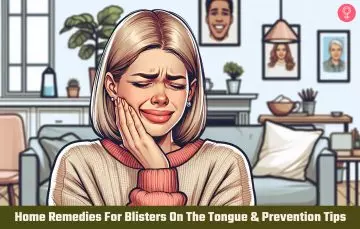
Image: Dall·E/StyleCraze Design Team
Learn more about the common causes of tongue ulcers in your 30s with. Watch this eye-opening video that will help you discover the reason behind your painful ulcers so that you can determine how to treat them.
Personal Experience: Source
StyleCraze's articles are interwoven with authentic personal narratives that provide depth and resonance to our content. Below are the sources of the personal accounts referenced in this article.
i How to beat debilitating canker sores; a personal guidebook https://medium.com/@stephencoyner/how-to-beat-debilitating-canker-sores-and-mouth-ulcers-a-personal-guidebook-e2fbc2f65f03References
Articles on StyleCraze are backed by verified information from peer-reviewed and academic research papers, reputed organizations, research institutions, and medical associations to ensure accuracy and relevance. Read our editorial policy to learn more.
- Wijnker, J J et al. “Antimicrobial properties of salt (NaCl) used for the preservation of natural casings.” Food Microbiology 23,7 (2006): 657-62.
https://pubmed.ncbi.nlm.nih.gov/16943065/ - Bidlas, Eva, and Ronald J W Lambert. “Comparing the antimicrobial effectiveness of NaCl and KCl with a view to salt/sodium replacement.” International Journal of Food Microbiology 124,1 (2008): 98-102.
https://pubmed.ncbi.nlm.nih.gov/18423764/ - Haukioja, Anna. “Probiotics and oral health.” European Journal Of Dentistry 4,3 (2010): 348-55.
https://www.ncbi.nlm.nih.gov/pmc/articles/PMC2897872/ - Lorea Baroja, M et al. “Anti-inflammatory effects of probiotic yogurt in inflammatory bowel disease patients.” Clinical and Experimental Immunology 149,3 (2007): 470-9.
https://www.ncbi.nlm.nih.gov/pmc/articles/PMC2219330/ - Kotz, C M et al. “In vitro antibacterial effect of yogurt on Escherichia coli.” Digestive Diseases and Sciences 35,5 (1990): 630-7.
https://pubmed.ncbi.nlm.nih.gov/2185003/ - Alqareer, Athbi et al. “The effect of clove and benzocaine versus placebo as topical anesthetics.” Journal of dentistry 34,10 (2006): 747-50.
https://pubmed.ncbi.nlm.nih.gov/16530911/ - Han, Xuesheng, and Tory L Parker. “Anti-inflammatory activity of clove (Eugenia caryophyllata) essential oil in human dermal fibroblasts.” Pharmaceutical biology 55,1 (2017): 1619-1622.
https://pubmed.ncbi.nlm.nih.gov/28407719/ - Thosar, Nilima et al. “Antimicrobial efficacy of five essential oils against oral pathogens: An in vitro study.” European Journal of Dentistry 7,Suppl 1 (2013): S071-S077.
https://www.ncbi.nlm.nih.gov/pmc/articles/PMC4054083/ - Koh, Teho et al. “Re-evaluation of anti-inflammatory potential of eugenol in IL-1β-stimulated gingival fibroblast and pulp cells.” In vivo (Athens, Greece) 27,2 (2013): 269-73.
https://pubmed.ncbi.nlm.nih.gov/23422489/ - Devi, K Pandima et al. “Eugenol (an essential oil of clove) acts as an antibacterial agent against Salmonella typhi by disrupting the cellular membrane.” Journal of Ethnopharmacology 130,1 (2010): 107-15.
https://pubmed.ncbi.nlm.nih.gov/20435121/ - Ninomiya, Kentaro et al. “Suppression of inflammatory reactions by terpinen-4-ol, a main constituent of tea tree oil, in a murine model of oral candidiasis and its suppressive activity to cytokine production of macrophages in vitro.” Biological & Pharmaceutical Bulletin 36,5 (2013): 838-44.
https://pubmed.ncbi.nlm.nih.gov/23649340/ - Carson, C F et al. “Melaleuca alternifolia (Tea Tree) oil: a review of antimicrobial and other medicinal properties.” Clinical Microbiology Reviews 19,1 (2006): 50-62.
https://www.ncbi.nlm.nih.gov/pmc/articles/PMC1360273/ - Salvatori, C et al. “A comparative study of antibacterial and anti-inflammatory effects of mouthrinse containing tea tree oil.” ORAL & implantology 10,1 59-70.
https://www.ncbi.nlm.nih.gov/pmc/articles/PMC5516420/# - Drake, D. “Antibacterial activity of baking soda.” Compendium of continuing education in dentistry. (Jamesburg, N.J. : 1995). Supplement 18,21 (1997): S17-21;quiz S46.
https://pubmed.ncbi.nlm.nih.gov/12017929/ - Newbrun, E. “The use of sodium bicarbonate in oral hygiene products and practice.” Compendium Of Continuing Education In Dentistry. (Jamesburg, N.J. : 1995). Supplement 18,21 (1997): S2-7; quiz S45.
https://pubmed.ncbi.nlm.nih.gov/12017930/ - Richman, P B et al. “The effectiveness of ice as a topical anesthetic for the insertion of intravenous catheters.” The American Journal of Emergency Medicine 17,3 (1999): 255-7.
https://pubmed.ncbi.nlm.nih.gov/10337884/ - Plewa, Michael C. “Aphthous Stomatitis.” StatPearls [Internet]., U.S. National Library of Medicine, 24 Jan. 2020.
www.ncbi.nlm.nih.gov/books/NBK431059/ - Altenburg, Andreas et al. “The treatment of chronic recurrent oral aphthous ulcers.” Deutsches Arzteblatt International 111,40 (2014): 665-73.
https://www.ncbi.nlm.nih.gov/pmc/articles/PMC4215084/ - “Antibacterial activity of hydrogen peroxide and the lactoperoxidase-hydrogen peroxide-thiocyanate system against oral streptococci.” Infection and immunity 62,2 (1994): 529-35.
https://pubmed.ncbi.nlm.nih.gov/8300211/ - Miyasaki, K T et al. “Antimicrobial properties of hydrogen peroxide and sodium bicarbonate individually and in combination against selected oral, gram-negative, facultative bacteria.” Journal of dental research 65,9 (1986): 1142-8.
https://pubmed.ncbi.nlm.nih.gov/3016051/ - Hosamane, Manasa et al. “Evaluation of holy basil mouthwash as an adjunctive plaque control agent in a four day plaque regrowth model.” Journal of clinical and experimental dentistry 6,5 e491-6.
https://www.ncbi.nlm.nih.gov/pmc/articles/PMC4312674/ - Szymanowska, Urszula et al. “Anti-inflammatory and antioxidative activity of anthocyanins from purple basil leaves induced by selected abiotic elicitors.” Food Chemistry 172 (2015): 71-7.
https://pubmed.ncbi.nlm.nih.gov/25442525/ - Kaya, Ilhan et al. “Antimicrobial activity of various extracts of Ocimum basilicum L. and observation of the inhibition effect on bacterial cells by use of scanning electron microscopy.” African journal of traditional, complementary, and alternative medicines : AJTCAM 5,4 363-9.
https://www.ncbi.nlm.nih.gov/pmc/articles/PMC2816579/ - Fatemeh Kazempor, Seyedeh et al. “The Analgesic Effects of Different Extracts of Aerial Parts of Coriandrum Sativum in Mice.” International Journal of Biomedical Science : IJBS 11,1 (2015): 23–28.>
https://www.ncbi.nlm.nih.gov/pmc/articles/PMC4392559/ - Laribi, Bochra et al. “Coriander (Coriandrum sativum L.) and its bioactive constituents.” Fitoterapia 103 (2015): 9-26.
https://pubmed.ncbi.nlm.nih.gov/25776008/ - Stoopler, Eric T, and Arthur S Kuperstein. “Glossitis secondary to vitamin B12 deficiency anemia.” Cmaj : Canadian Medical Association Journal = Journal De L’association Medicale Canadienne Vol. 185,12 (2013): E582.
https://www.ncbi.nlm.nih.gov/pmc/articles/PMC3761039/ - Huguley CM JR.. The Tongue. In: Walker HK, Hall WD, Hurst JW, editors. Clinical Methods: The History, Physical, and Laboratory Examinations. 3rd edition. Boston: Butterworths; 1990. Chapter 130.
https://www.ncbi.nlm.nih.gov/books/NBK236/ - Mahdizadeh, Shahla et al. “Avicenna’s Canon of Medicine: a review of analgesics and anti-inflammatory substances.” Avicenna Journal Of Phytomedicine 5,3 (2015): 182-202.
https://www.ncbi.nlm.nih.gov/pmc/articles/PMC4469963/ - Rayati, Farshid et al. “Comparison of anti-inflammatory and analgesic effects of Ginger powder and Ibuprofen in postsurgical pain model: A Randomized, Double-blind, Case-control Clinical Trial.” Dental Research Journal 14,1 (2017): 1-7.
https://www.ncbi.nlm.nih.gov/pmc/articles/PMC5356382/ - Ankri, S, and D Mirelman. “Antimicrobial properties of allicin from garlic.” Microbes And Infection 1,2 (1999): 125-9.
https://pubmed.ncbi.nlm.nih.gov/10594976/ - Karuppiah, Ponmurugan, and Shyamkumar Rajaram. “Antibacterial effect of Allium sativum cloves and Zingiber officinale rhizomes against multiple-drug resistant clinical pathogens.” Asian Pacific Journal Of Tropical Biomedicine 2,8 (2012): 597-601.
https://www.ncbi.nlm.nih.gov/pmc/articles/PMC3609356/ - Nagpal, Monika, and Shaveta Sood. “Role of curcumin in systemic and oral health: An overview.” Journal Of Natural Science, Biology, And Medicine 4,1 (2013): 3-7.
https://www.ncbi.nlm.nih.gov/pmc/articles/PMC3633300/ - Vázquez, B et al. “Antiinflammatory activity of extracts from Aloe vera gel.” Journal of Ethnopharmacology 55,1 (1996): 69-75.
https://pubmed.ncbi.nlm.nih.gov/9121170/ - Jain, Supreet et al. “Antibacterial Effect of Aloe Vera Gel against Oral Pathogens: An In-vitro Study.” Journal of Clinical and Diagnostic Research : JCDR 10,11 (2016): ZC41-ZC44.
https://www.ncbi.nlm.nih.gov/pmc/articles/PMC5198455/ - de Freitas Cuba, Letícia et al. “Topical application of Aloe vera and vitamin E on induced ulcers on the tongue of rats subjected to radiation: clinical and histological evaluation.” Supportive Care In Cancer : Official Journal Of The Multinational Association Of Supportive Care In Cancer 24,6 (2016): 2557-64.
https://pubmed.ncbi.nlm.nih.gov/26698599/ - Johansson, Ingegerd, and Pernilla Lif Holgerson. “Milk and oral health.” Nestle Nutrition workshop series. Paediatric programme 67 (2011): 55-66.
https://pubmed.ncbi.nlm.nih.gov/21335990/ - Farzadinia, Parviz et al. “Anti-inflammatory and Wound Healing Activities of Aloe vera, Honey and Milk Ointment on Second-Degree Burns in Rats.” The international journal of lower extremity wounds 15,3 (2016): 241-7.
https://pubmed.ncbi.nlm.nih.gov/27217089/ - Beheshti-Rouy, Maryam et al. “The antibacterial effect of sage extract (Salvia officinalis) mouthwash against Streptococcus mutans in dental plaque: a randomized clinical trial.” Iranian Journal Of Microbiology 7,3 (2015): 173-7.
https://www.ncbi.nlm.nih.gov/pmc/articles/PMC4676988/ - Baricevic, D et al. “Topical anti-inflammatory activity of Salvia officinalis L. leaves: the relevance of ursolic acid.” Journal of Ethnopharmacology 75,2-3 (2001): 125-32.
https://pubmed.ncbi.nlm.nih.gov/11297842/ - Hamidpour, Mohsen et al. “Chemistry, Pharmacology, and Medicinal Property of Sage (Salvia) to Prevent and Cure Illnesses such as Obesity, Diabetes, Depression, Dementia, Lupus, Autism, Heart Disease, and Cancer.” Journal of Traditional and Complementary Medicine 4,2 (2014): 82-8.
https://www.ncbi.nlm.nih.gov/pmc/articles/PMC4003706/ - Shilling, Michael et al. “Antimicrobial effects of virgin coconut oil and its medium-chain fatty acids on Clostridium difficile.” Journal Of Medicinal Food 16,12 (2013): 1079-85.
https://pubmed.ncbi.nlm.nih.gov/24328700/ - Intahphuak, S et al. “Anti-inflammatory, analgesic, and antipyretic activities of virgin coconut oil.” Pharmaceutical Biology 48,2 (2010): 151-7.
https://pubmed.ncbi.nlm.nih.gov/20645831/https://pubmed.ncbi.nlm.nih.gov/20645831/ - Molan, P C. “The potential of honey to promote oral wellness.” General Dentistry 49,6 (2001): 584-9.
https://pubmed.ncbi.nlm.nih.gov/12024746/ - Owoyele, Bamidele Victor et al. “Analgesic and anti-inflammatory effects of honey: the involvement of autonomic receptors.” Metabolic Brain Disease 29,1 (2014): 167-73.
https://pubmed.ncbi.nlm.nih.gov/24318481/ - Nzeako, Basil C, and Faiza Al-Namaani. “The antibacterial activity of honey on helicobacter pylori.” Sultan Qaboos University Medical Journal 6,2 (2006): 71-6.
https://www.ncbi.nlm.nih.gov/pmc/articles/PMC3074916/ - “Risk of serious and potentially fatal blood disorder prompts FDA action on oral over-the-counter benzocaine products used for teething and mouth pain and prescription local anesthetics” U.S. Food and Drug Administration (2018)
https://www.fda.gov/drugs/drug-safety-and-availability/risk-serious-and-potentially-fatal-blood-disorder-prompts-fda-action-oral-over-counter-benzocaine - Kim, Jihoon, Moon-Jong Kim, and Hong-Seop Kho. “Oral manifestations in vitamin B12 deficiency patients with or without history of gastrectomy.” BMC Oral Health 16.1 (2016): 1-9.
https://www.ncbi.nlm.nih.gov/pmc/articles/PMC4884371/





